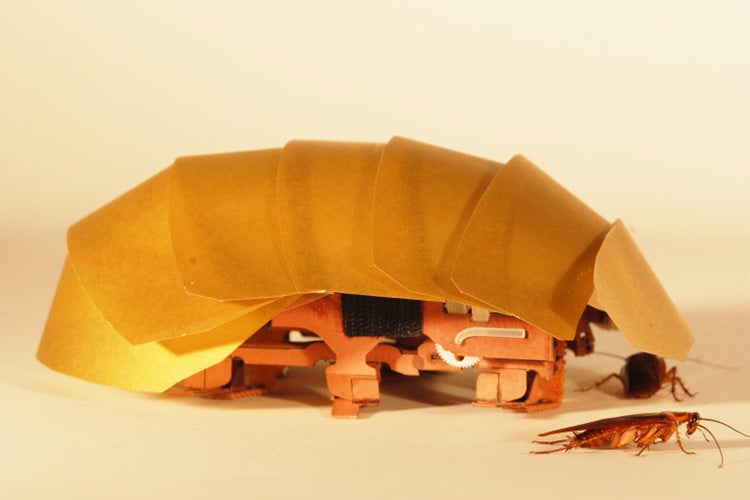Scientists create robotic cockroach to search disaster areas
The unusual robot takes its design inspiration from the common American cockroach

A team of American scientists have taken inspiration from the humble cockroach to create a slightly unnverving robot which is capable of squeezing through tiny gaps and being crushed by weights that far exceed its own.
The University of California, Berkeley researchers behind the CRAM (Compressible Robot with Articulated Mechanisms), hope that one day similar machines could be used in disaster areas, where they could make their way through piles of wreckage to discover survivors and find information.
The development of the robot began with an in-depth look at the movement of cockroaches - the researchers, led by Kaushik Jayaram, found that the insects could squeeze through gaps as small as 3mm tall, move through passages much narrower than their bodies, and withstand crushing forces of up to 900 times their bodyweight, which is akin to an average person surviving a crush of almost 60,000kg.
"What's impressive about these cockroaches is that they can run as fast through a quarter-inch gap as a half-inch gap, by reorienting their legs completely out to the side," Jayaram said.
"They're about half an inch tall when they run freely, but can squish their bodies to one-tenth of an inch - the height of two stacked pennies."
Using their knowledge of the cockroach's body as inspiration, the team designed a simple and cheap palm-size robot, which splays its legs outwards when squashed.
They then topped it with a layed plastic shell similar to the tough wings covering the back of a cockroach.
The CRAM was made with a basic robotics kit, but the team hopes that the idea could be used in the future to create robots capable of helping in disaster situations like tornadoes, earthquakes and explosions.
Robert Full, integrative biology professor at UC Berkeley said: "In the event of an earthquake, first responders need to know if an area of rubble is stable and safe, but the challenge is, most robots can't get into rubble."
"But if there are lots of cracks and vents and conduits, you can imagine just throwing a swarm of these robots in to locate survivors and safe entry points for first responders," he said.
Robot cockroaches may seem scary, but in the event of a natural disaster, you're better off with them than a Russian earthquake-proof bed.
Join our commenting forum
Join thought-provoking conversations, follow other Independent readers and see their replies
Comments